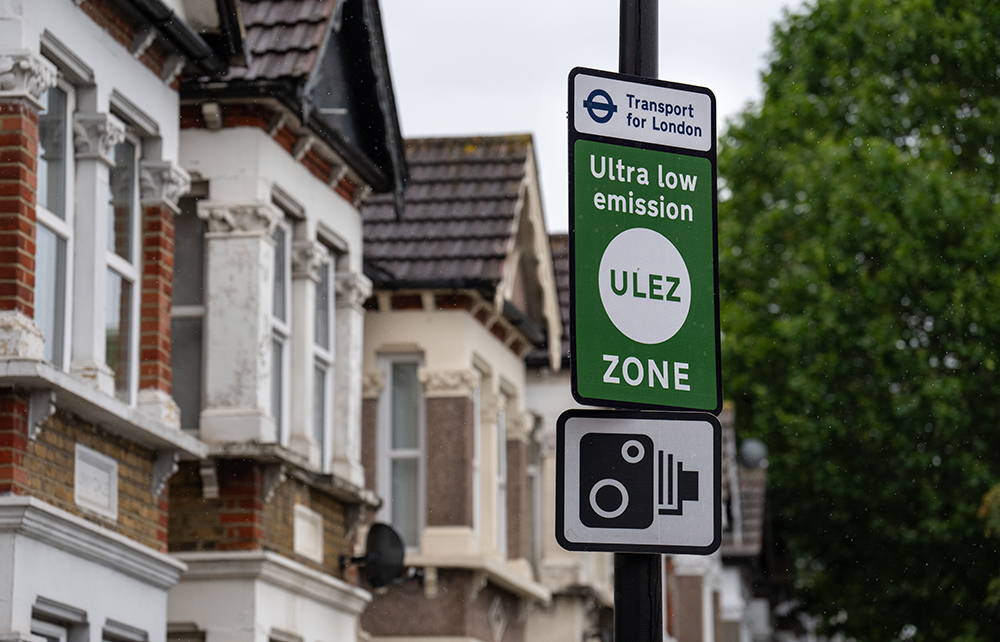London’s Ulez scheme has been expanded. A new network of cameras filming the traffic movements of millions of Londoners is now switched on. Old cars and vans, often used by sole traders, will be charged £12.50 a day if they pull out of their driveways. Keir Starmer had asked the London Mayor Sadiq Khan to ‘reflect’ on the policy after Labour lost the Uxbridge and South Ruislip by-election. Khan duly did, and concluded that he would stick to plan A. With 4,000 Londoners dying of air pollution every year, he said he had no option.
But if that figure is correct, why has air pollution been mentioned in only one death certificate in four years? Nationally, nitrogen dioxide (NO2) levels have fallen 75 per cent over the past three decades, thanks to cleaner car engines. Academic studies suggest London’s air was 20 times more polluted in the 17th century than it is now. The truth is that, far from the much-touted ‘emergency’, the air in the capital has not been purer since long before the industrial revolution. So what meaningful difference would be made by an expanded Ulez zone?
The real effect of low-emission zones remains a mystery that a great many people have no interest in resolving
Khan has sought to answer this with a study his office published on the effects of the first six months of Ulez in central London. It claimed that NO2 levels had fallen 36 per cent since a similar period in 2017. Adjusting for the clean-air trend, Ulez could claim credit for reducing NO2 by 29 per cent. If these figures were true, they would indeed make a clear-cut case for expanding Ulez.
But dig deeper, and it becomes murkier. When challenged on the figures, the Mayor has said he is citing world-class academics. The study was actually conducted by his own office. A team at Imperial College has looked at the data (collected by hundreds of sensors all over the city) and reached dramatically different conclusions. Ulez, they said, had helped lower NO2 levels by just 3 per cent, with a negligible effect on ozone and particulate pollution.
This should have raised serious questions about the scheme. Could it be that the only independent academic study had exposed Ulez as a fraud? And might London’s Mayor be about to impose a highly regressive tax on low-income Londoners without first having made sure that the benefits of his policy would outweigh the costs? Might this clean-air wheeze be an idea that’s simply too fashionable or too lucrative to check?
Having written a book called Breathe, it would certainly be embarrassing for Khan to admit that his flagship policy may be based on error. The same goes for other local government figures who are similarly keen to pose as green crusaders by imposing clean-air zone taxes. The Department for Environment, Food and Rural Affairs should have commissioned studies – not just in London but elsewhere too – to stop councils levying new taxes on a false premise. Either such zones make a serious difference, or they do not.
When the real Imperial study was published, Khan should have been mortified at the thought that he was about to immiserate Londoners for no real environmental gain. He should have commissioned a full investigation to put the matter beyond all doubt. Instead, the Mayor’s office sought to discredit the inconvenient new findings. The deputy mayor for the environment and energy, Shirley Rodrigues, wrote to another group at Imperial College asking for help criticising the earlier study that had undermined Ulez. It also transpired that these academics have received £800,000 in funding from the Mayor’s office in the past two years.
So the real effect of low-emission zones remains a mystery that Khan has no interest in resolving. This is a classic example of noble-cause corruption, a trait in academic and public policy where dodgy data is not scrutinised if it is seen to support a virtuous cause. We saw that, too, in the Covid lockdowns. There are financial incentives in scientific academia to heavily support official bodies. The digital world has made scrutiny easier, but the rise of social media has created an environment in which academics who go against the grain risk being attacked and having their careers limited.
During Covid, a revolutionary data dashboard was created by entrepreneurial civil servants so all vital information was made public as soon as it was ready. This empowered outsiders to expose deep flaws in Sage data and avert a new lockdown. Such is the power of transparency.
Rishi Sunak ought to pass a law obliging all public bodies (including Sage) to publish the assumptions, data and calculations behind models and studies used in public policy. The likelihood of scrutiny should deter anyone from trying to cook the figures.
The issue here is far bigger than Ulez. It is about ensuring that the open data era makes for better government – and that the lessons of the Covid response are now learned. Doing so would be hugely beneficial. The Tory government may lack the ability to identify and expose dodgy studies, but it can easily pass laws that enable others to do so. There is still time for Sunak to act.






Comments